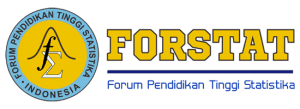ANALISIS SENTIMEN MASYARAKAT PADA KEBIJAKAN VAKSINASI COVID-19 DI TWITTER MENGGUNAKAN METODE MESIN VEKTOR PENDUKUNG DENGAN KERNEL RADIAL BASIS FUNCTION BERBASIS FITUR LEKSIKON
Abstract
Keywords
Full Text:
PDFReferences
Bekkar, M., Djemaa, H.K. and Alitouche, T.A. (2013), "Evaluation measures for models assessment over imbalanced data sets", J Inf Eng Appl, Vol. 3 No. 10.
Buntoro, G.A., Adji, T.B. and Purnamasari, A.E. (2014), "Sentiment Analysis Twitter dengan Kombinasi Lexicon Based dan Double Propagation", The 6th Conference on Information Technology and Electrical Engineering (CITEE), pp. 39-43.
Dhawan, V. and Zanini, N. (2014), "Big data and social media analytics", Research Matters: A Cambridge Assessment Publication, Vol. 18 No. 7, pp. 36-41.
Gokgoz, E. and Subasi, A. (2015), "Comparison of decision tree algorithms for EMG signal classification using DWT", Biomedical Signal Processing and Control, Elsevier, Vol. 18, pp. 138-144.
Gopi, A.P., Jyothi, R., Narayana, V.L. and Sandeep, K.S. (2020), "Classification of tweets data based on polarity using improved RBF kernel of SVM", International Journal of Information Technology, Springer, pp. 1-16.
Kurniawan, A. and Indriati, S.A. (2019), "Analisis Sentimen Opini Film Menggunakan Metode Naïve Bayes dan Lexicon Based Features", Jurnal Pengembangan Teknologi Informasi Dan Ilmu Komputer E-ISSN, Vol. 2548, p. 964X.
Kurniawan, T. (2017), "Implementasi Text Mining Pada Analisis Sentimen Pengguna Twitter terhadap Media Mainstream Menggunakan Naïve Bayes Classifier dan Support Vector Machine", Institut Teknologi Sepuluh Nopember.
Liu, B. (2012), "Sentiment analysis and opinion mining", Synthesis Lectures on Human Language Technologies, Morgan & Claypool Publishers, Vol. 5 No. 1, pp. 1-167.
Nugroho, A.S., Witarto, A.B. and Handoko, D. (2003), "Support vector machine", Proceeding Indones. Sci. Meeting Cent. Japan.
Nguyen, G. H., Abdesselam, B. & Son, P. L. (2009). Learning pattern classification tasks with imbalanced data sets. Pattern recognition, pp. 193-208.
Pisner, D.A. and Schnyer, D.M. (2020), "Support vector machine", Machine Learning, Elsevier, pp. 101-121.
Sari, P.D. (2017), "Analisis Credit Scoring Menggunakan Regresi Logistik LASSO dan Support Vector Machine (SVM).", Bogor Agricultural University (IPB).
Septian, J.A., Fachrudin, T.M. and Nugroho, A. (2019), "Analisis Sentimen Pengguna Twitter Terhadap Polemik Persepakbolaan Indonesia Menggunakan Pembobotan TF-IDF dan K-Nearest Neighbor", INSYST: Journal of Intelligent System and Computation, Vol. 1 No. 1, pp. 43-49.
Vidya, N.A., Fanany, M.I. and Budi, I. (2015), "Twitter sentiment to analyze net brand reputation of mobile phone providers", Procedia Computer Science, Elsevier, Vol. 72, pp. 519-526.
Wahid, D.H. and Azhari, S.N. (2016), "Peringkasan sentimen ekstraktif di twitter menggunakan hybrid TF-IDF dan cosine similarity", IJCCS (Indonesian Journal of Computing and Cybernetics Systems), Vol. 10 No. 2, pp. 207-218.
Williams, G. (2011), Data Mining with Rattle and R: The Art of Excavating Data for Knowledge Discovery, Springer Science & Business Media.
DOI: https://doi.org/10.34312/jjps.v3i2.16663
Refbacks
- There are currently no refbacks.
Copyright (c) 2022 Jambura Journal of Probability and Statistics

This work is licensed under a Creative Commons Attribution-NonCommercial 4.0 International License.







.jpg)






